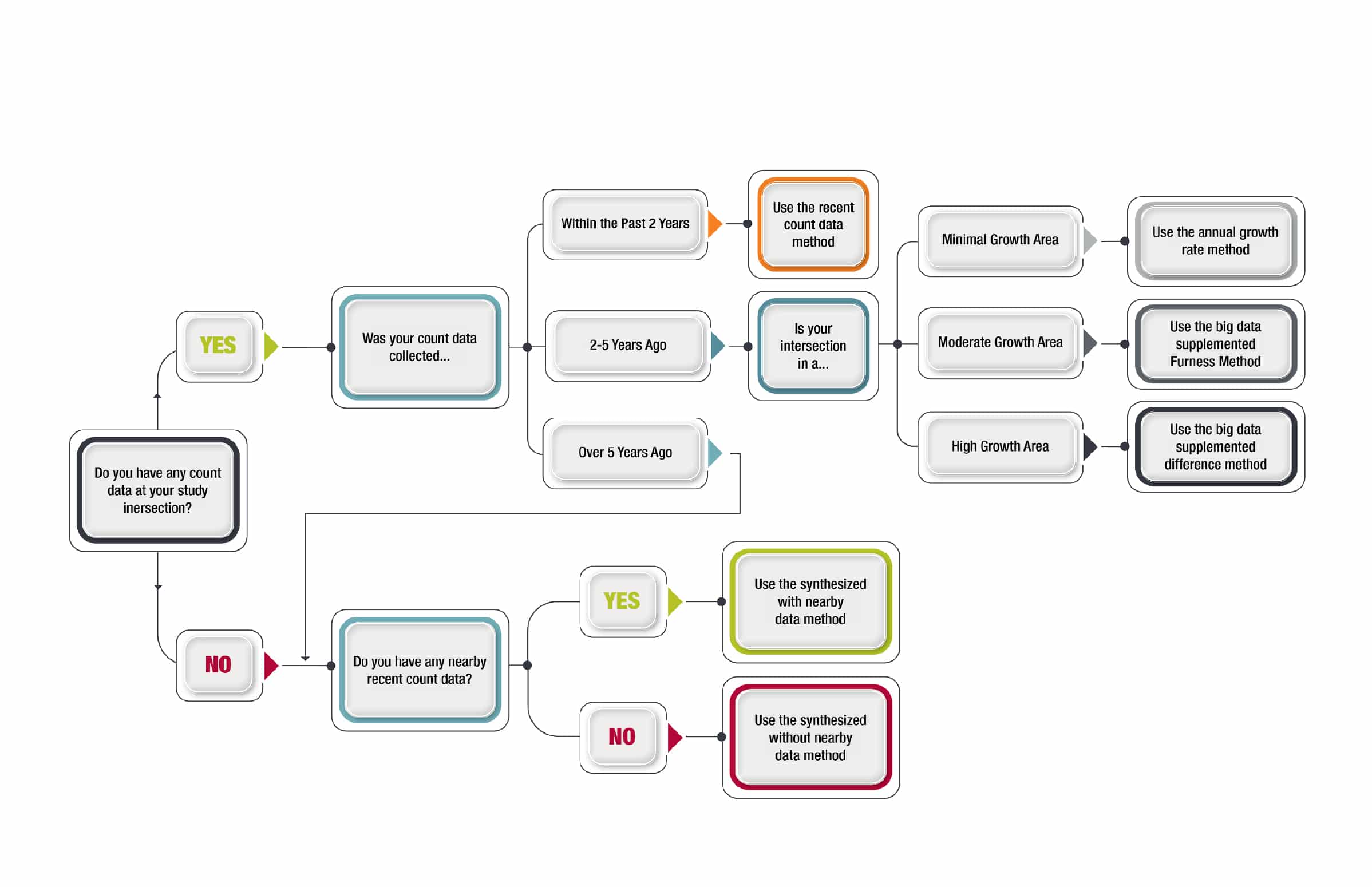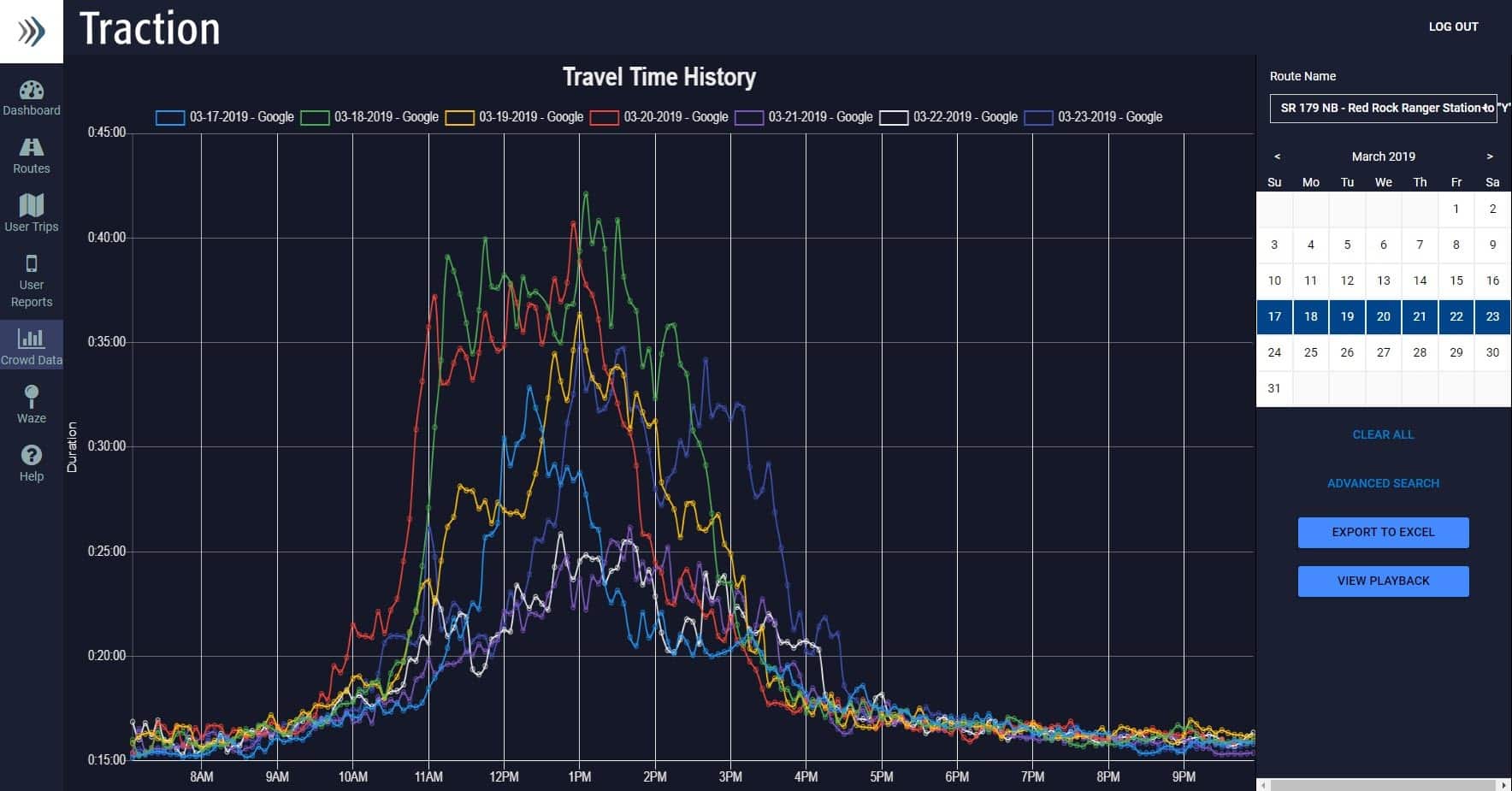- May 28, 2020
- COVID-19, Perspectives
Traffic Studies During COVID-19: Keep Projects Moving Using Big Data

As a result of the COVID-19 outbreak, transportation professionals have become well aware that the effects of the nationwide shutdown of all non-essential travel have disrupted the typical methodology for executing traffic studies. Quantifying travel—from volumes to speeds to travel times and travel patterns (origin-destination) to transit usage for existing conditions—isn’t typical when looking at data from March 2020 and beyond. It may take an extended period of months or even years for travel patterns to return to what was observed immediately prior to COVID-19.
Similar to the obstacles experienced during the Great Recession of 2008, challenges with infrastructure and transportation planning will occur due to the pandemic. With travel patterns no longer aligned with historical count data, agencies must determine the appropriate conditions and timing for collecting traffic data used in preparing operations analyses and making important infrastructure investments.
We understand these challenges and our clients’ desires to keep projects moving forward. Our team of transportation professionals can help you understand how COVID-19 has impacted travel in your area and collect appropriate “typical” conditions data using a variety of big data solutions based on your needs.
Learn More from Our Traffic Counts White Paper
We recently published an in-depth white paper titled Proposed Methodology for Developing Intersection Turning Movement Volumes Using Historical Counts and Big Data. Since agencies are often more comfortable approving and using count data, this methodology prioritizes getting the most out of any available count data. It also identifies where and when big data may be a good supplement to this traditional resource. The white paper provides a thoughtful solution for moving projects that require up-to-date traffic counts forward. The decision tree below summarizes the basic process outlined in the paper for determining the best mix of count data and big data at any given project intersection.
Methodology Decision Tree
Capture Real-Time Traffic Data
Kimley-Horn’s Traction software allows transportation agencies to monitor travel times for desired routes. Data collection does not require any field hardware or lead time and is displayed in real-time and saved to allow for observation of trends and historical analysis.
Data may be sourced from a variety of providers including Azure/Tom-Tom, Waze, Google, and we are currently exploring a powerful integration with INRIX. In addition, Traction features a mobile app that gathers crowd-sourced trajectory data and includes analytics for measuring delay, number of stops, speeds, and emissions calculations. Traction can also integrate with an agency’s Waze data feed to provide reports on traffic alerts (e.g. hazards, incidents, jams, and unusual traffic behavior/irregularities). We have partnered with third-party solutions, including INRIX, to obtain this data at a regional level.
Understand Regional Travel Patterns
Kimley-Horn is well-versed in the big data solutions available for obtaining origin-destination data, whether you’re looking to understand travel patterns of a specific site or regional flows across geographic areas. Looking to understand the impacts of VMT for a new development, or quantify the amount of cut-through traffic on a roadway in your city? Kimley-Horn’s transportation professionals can help you identify the most appropriate data-driven solutions.


